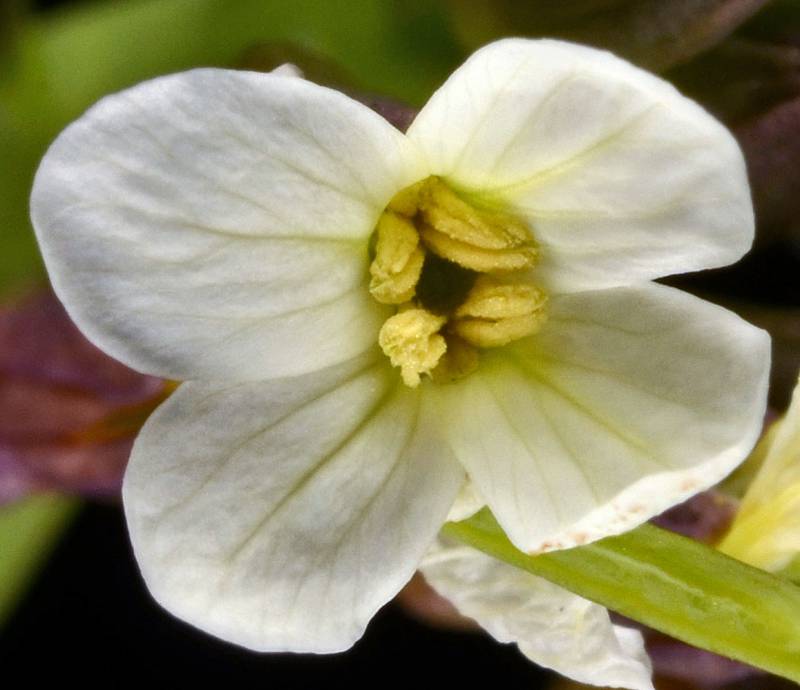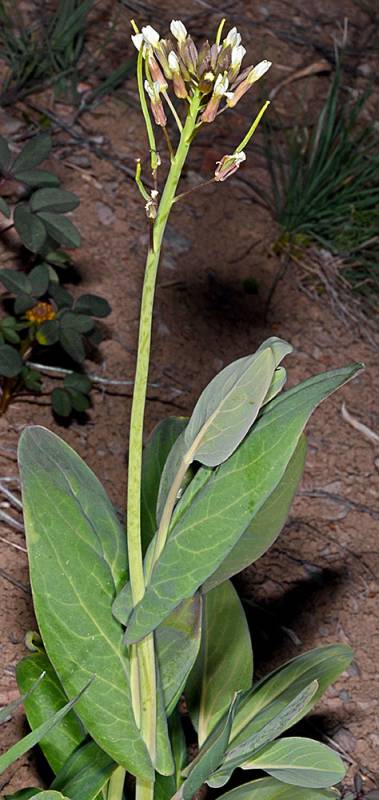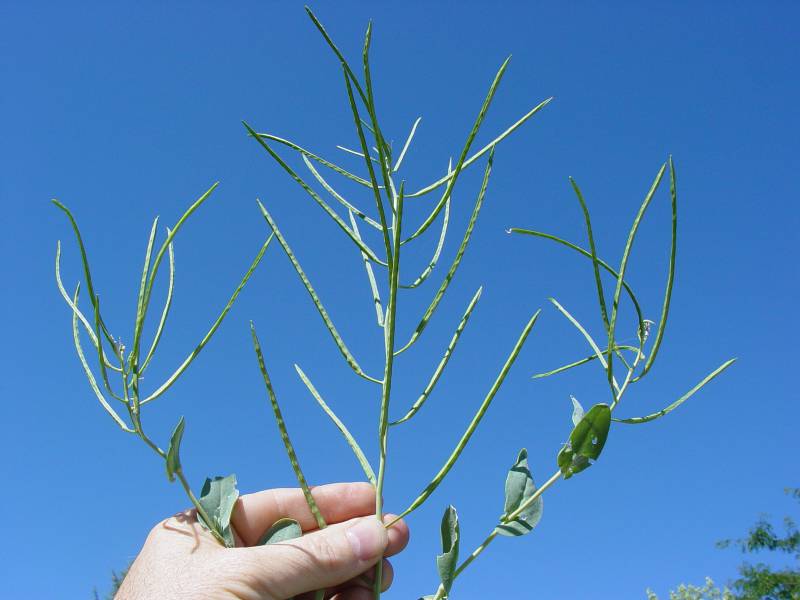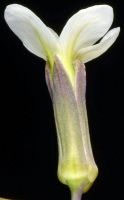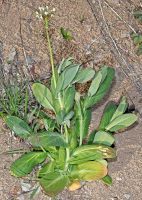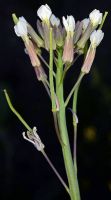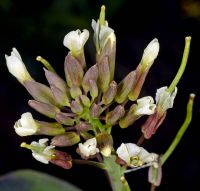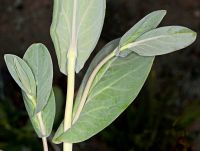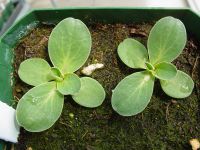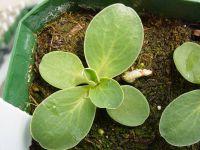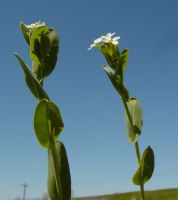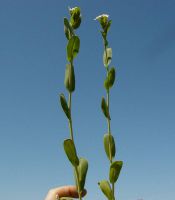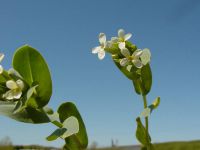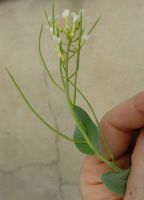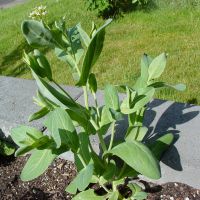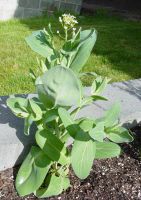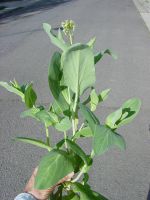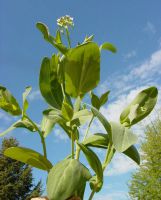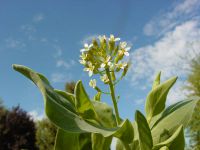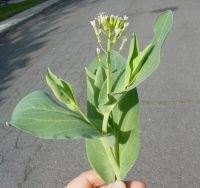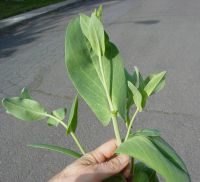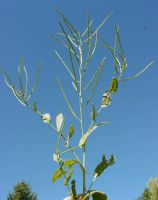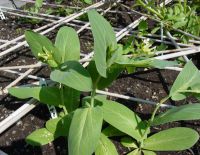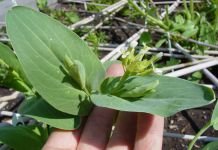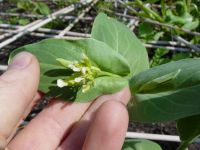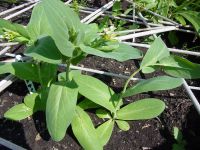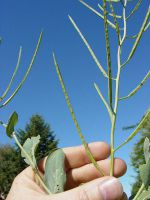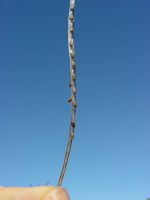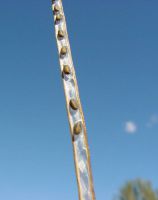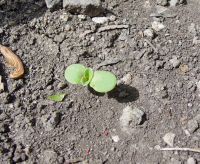Distribution: Occurring chiefly east of the Cascades crest in Washington; Alaska to California, east across North America to the Atlantic Coast.
Habitat: Roadsides, waste places, and other disturbed areas.
Flowers: May-August
Origin: Introduced from Eurasia
Growth Duration: Annual
Conservation Status: Not of concern
Pollination: Bees, flies, butterflies
Glabrous, glaucous annual, the simple stem 3-7 dm. tall.
Basal leaves obovate to oblanceolate, narrowed gradually to the base, entire, 5-9 cm. long; cauline leaves alternate, oblong-lanceolate, sessile and cordate-clasping.
Inflorescence a few-flowered, flat-topped, bractless raceme, becoming elongate and loose; pedicles ascending, 10-15 mm. long; sepals 4, erect, 6-8 mm. long, acute, the lateral pair basally saccate; petals 4, cream to lemon, 7-12 mm. long, slenderly clawed, the blades narrowly obovate; stamens 6; style thick, 1 mm. long.
Siliques linear, terete, 8-13 cm. long and 1.5-2 mm. thick, tapered to a slender tip.
Publication: Fl. Belg. 123. 1827.
PNW Herbaria: Specimen records of Conringia orientalis in the Consortium of Pacific Northwest Herbaria database
WA Flora Checklist: Conringia orientalis checklist entry
OregonFlora: Conringia orientalis information
E-Flora BC: Conringia orientalis atlas page
CalPhotos: Conringia orientalis photos

